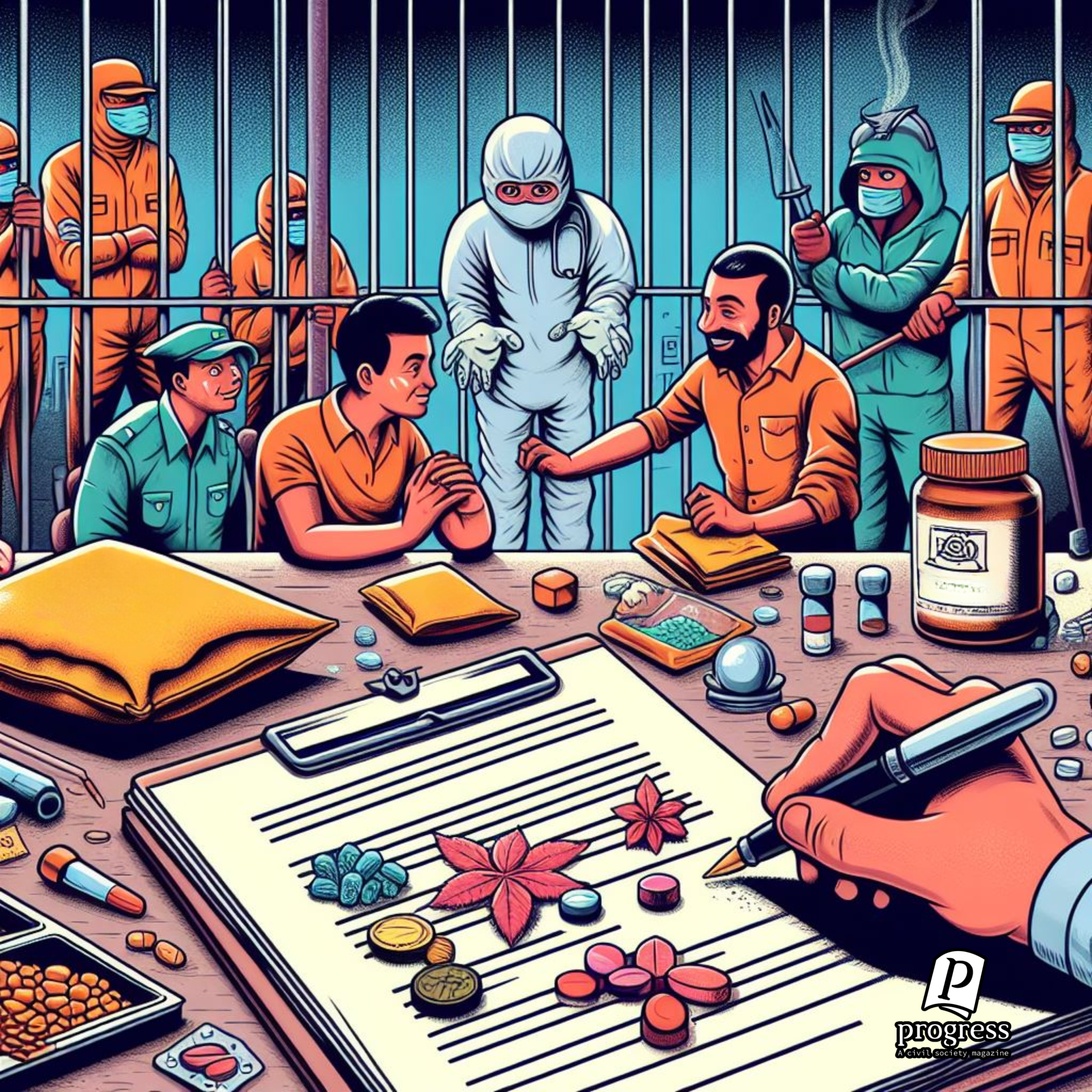Like many other countries around the world, Bangladesh has been trying to combat the rise of narcotics for years. Drug trafficking and abuse have been a prominent issue in our country for a long time, and the government has reformed the laws related to it to enforce severe punishments to deter people. However, even with the stricter laws, we have yet to see significant success in controlling the ongoing abuse of drugs.
According to the Department of Narcotics Control (DNC), the seizure of yaba and heroin has decreased. In contrast, the seizure of cannabis and codeine have increased, and most shockingly, the seizure of injecting drugs has exponentially grown to 90.59% compared to the previous year. If we consider the unreported cases of substance abuse and trafficking, then the numbers will become even more drastic. It is estimated that up to 4 million people might be suffering from substance abuse in our country.
These statistics indicate the shortcomings of recent narcotics control laws and a need for reform. The primary legislation aimed to combat narcotics in our country is the Narcotics Control Act 2018. The Act mainly focuses on regulation and taking punitive measures such as fines, imprisonment, and even the death penalty. However, it does not shed the same amount of focus on rehabilitation. Section 61 of the Act calls for establishing government and privately-owned rehabilitation centers, and there was an initiative to build 7 new rehab centers in each district under the DNC. However, the DNC has yet to enact these initiatives, and there are only five government-owned rehab centers.
The criminalization of substance abuse has led to overcrowded prisons with minimal to no medical help and an overwhelmed justice system. It does not address the underlying issues of drug abuse but instead creates a cycle of addiction and incarceration. The law also fails to draw a difference between addicts who are captured in this trap because of financial, physical, and psychological issues and peddlers and traffickers who exploit these vulnerable people. This results in the stigmatization of drug use, which makes it even harder for the victims to come out from this cycle. The prison system of our country is not equipped to handle the large amount of substance abusers. Although The Prison Act of 1894 instructs every prison to have a hospital, many prisons in our country do not provide proper medical care, which further jeopardizes the health of incarcerated addicts and regular prisoners.
The Act also does not have explicit provisions for homeless children and adolescents, who are a massive part of the substance-addicted population. According to a survey done by Bangladesh Shishu Adhikar forum in 2013, approximately 85% of street children were suffering from substance abuse, and it is believed that the number has been on the rise for the past decade. However, neither the Narcotics Control Act nor the government at large seem to be ready to take action for the betterment of these children.
These shortcomings and the lack of proper law enforcement have led to a system where the underlying issues of narcotics abuse are not appropriately addressed; all the while, the victims of it are being exploited and punished. This is why I believe there is a need for significant reform in the laws related to narcotics control.
Looking at foreign laws and policies related to the topic, we can see that the countries follow two distinct roots. Some countries have strictly criminalized narcotics trafficking and substance abuse, such as Japan. Japan has seen success in the reduction of drug abuse and trafficking by taking stricter punitive measures. The Narcotics and Psychotropics Control Act 1953 is the key legislation that regulates the use of various drugs in Japan and enforces strict licensing measures while prescribing heavy penalization for anyone who is involved in the illegal trafficking and abuse of drugs. It has helped with controlling the distribution, production, and use of various addictive substances in Japan. However, it would not have been possible without the extensive treatment and rehabilitation services provided by the Japanese government. These programs help individuals in their journey of overcoming addiction and have helped Japan control the narcotics problem.
On the other hand, some countries have decided to decriminalize substance abuse and have taken a more lenient route. The controversial practice has also seen success in curbing the narcotics problem. A great example of that would be Switzerland. The four-pillar policy of “prevention, treatment, harm reduction, and law enforcement” has seen massive success in reducing overdose-related deaths, HIV infection, and the number of new addicts in the country. Switzerland has decriminalized the personal use of drugs in small quantities. It has also created Heroin-Assisted Treatments and needle exchange programs to help long-term addicts slowly re-enter society with the help of medical experts. Furthermore, to stop illegal drug paddling, the country has placed strict laws against the illegal production and distribution of drugs to deter people. These measurements have created a balance where addicts can seek help while law enforcement can punish the exploiters.
In Bangladesh, adapting any of the above-mentioned legislations might be tough. Bangladesh does not have enough prisons and rehabs to accommodate the large number of addicts, nor does it have the sociopolitical environment to sustain a four-pillar program. A hybrid of these two systems on the other hand may be more effective. If the government reformed the Narcotics Control Act 2018 and focused more on battling the peddlers and traffickers, while helping the people suffering from addiction through government-mandated programs, the Act might become more successful in controlling narcotics. Drug traffickers and distributors are the main culprits behind the ongoing narcotics issue and law enforcement should take strict, exemplary actions against them. The addicted individuals, on the other hand, should be provided with government-mandated treatments to help them overcome their addiction. It has to be remembered that the main reason behind drug addiction in Bangladesh is unemployment, property, and illiteracy, and imprisoning the addicts will only endanger them further.












Well written.